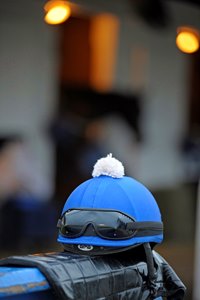Workers Comp Premiums for NY Riders to Drop in 2018


New York Thoroughbred owners and trainers for the first time in more than a decade will see a decline in overall insurance premiums paid to provide workers compensation coverage for jockeys and exercise riders, industry officials said Dec. 29.
The New York Jockey Injury Compensation Fund, which runs the workers compensation program for the Thoroughbred industry in the state, said the overall premium costs for coverage in 2018 will drop by more than $750,000.
The fund's officials were not immediately available to provide details about the premium rate cut. The insurance coverage in 2017 cost the industry about $9 million, according to New York Thoroughbred Horsemen's Association President Joseph Appelbaum. He told BloodHorse last week of the looming announcement to address the rising insurance costs.
"The workers' comp crisis cannot be solved in one year. We have an ongoing commitment to safety and claims management, and will continue to explore all options for program structure. Our work has just started, but we believe we are on a path that will save money for New York's horsemen and make the state a better place to do business,'' Appelbaum said in a written statement Friday.
The announcement affects insurance expenses for owners at trainers at New York Racing Association tracks and Finger Lakes racetrack.
"The Jockey Insurance Fund has done a good job to reduce those (insurance) costs, but they are still very, very high,'' David Brown, president of the Finger Lakes Horsemen's Benevolent and Protective Association, said in an interview.
Brown said a combination of insurance costs and lower purses offered at Finger Lakes compared with NYRA tracks is making recruitment of owners and trainers increasingly difficult.
At Finger Lakes, he said owners and trainers were responsible for nearly $2,200 in upfront insurance payments in 2018; that amount was paid whether, for instance, an owner raced one horse or 50 horses. Additionally, there is a $1.50 per stall payment to cover the insurance costs as well as a 2 percent charge against purse winnings.
To try to retain and lure trainers to Finger Lakes, Brown said the horsemen's group this year paid about $700,000 to cover the upfront fees that trainers would have been required to pay for the insurance coverage. He estimated the total costs for the workers compensation fund will total about $1.25 million in 2018—about the same as the current year.
"It's been a real burden and it's kept people from coming to New York,'' Brown said of the insurance costs that he noted are far higher than other states.
Rick Violette Jr., the chairman of the jockey insurance fund in New York, credited the lower premium amount on a number of changes over the past year or so. He said two insurance experts—Corporate Risk Solutions and JLT Specialty Insurance Services—were brought on, additional safety measures incorporated and costs were controlled via new claims management procedures by the fund's new insurer, Swiss-based Zurich Insurance Group.
"Ultimately, the best way to lower premiums is to lower the frequency and severity of injuries,'' said Violette, who for years has been sounding the alarms over rising insurance costs. Violette recently ended his presidency of NYTHA, a post he held since 2008, but he is still chairman of the jockey injury fund.
It was not immediately clear if the insurance program for 2018 has been formally approved by the state Gaming Commission. Appelbaum said in a statement that the jockey injury fund worked on the effort with the state regulator as well as NYRA, Finger Lakes racetrack and its horsemen's group, and the NYTHA.
"It's a great example of what the Thoroughbred industry can do when it pools its resources to reach a common goal. We have created written guidelines for exercise riders, adopted up-to-date regulations for safety vests and helmets, introduced a voucher program to help defray the cost of new equipment for exercise riders, instituted random inspections to ensure that safety equipment is up to code and random breathalyzers for exercise riders, and we have paramedics on duty during racing and training,'' Appelbaum said.
